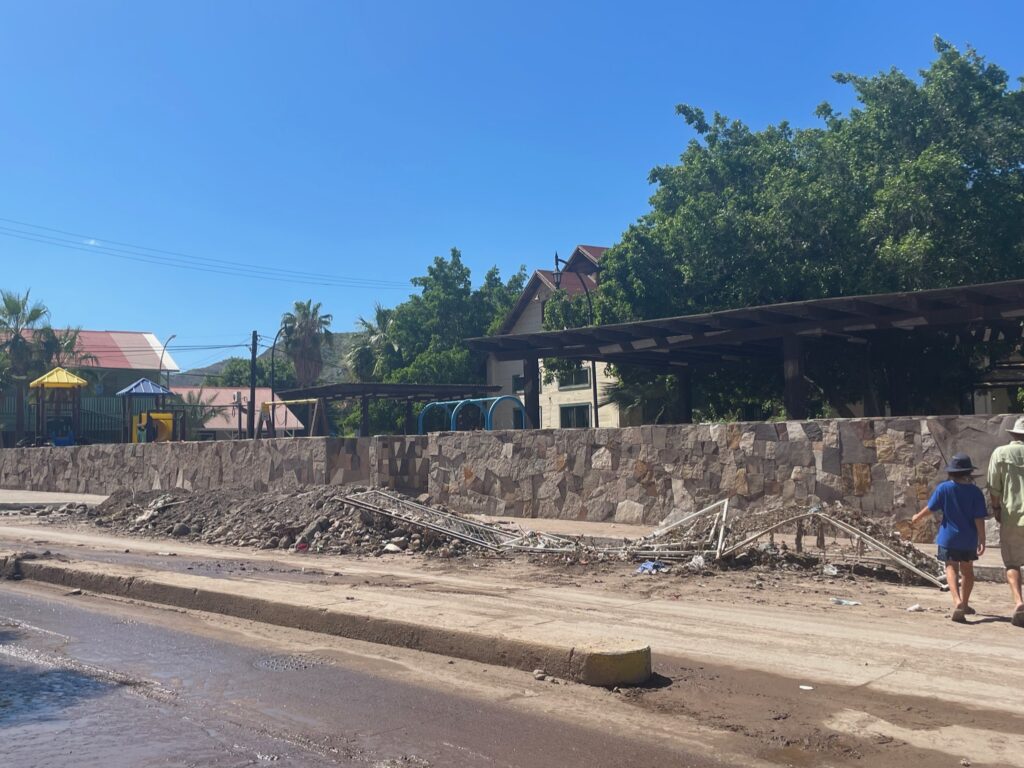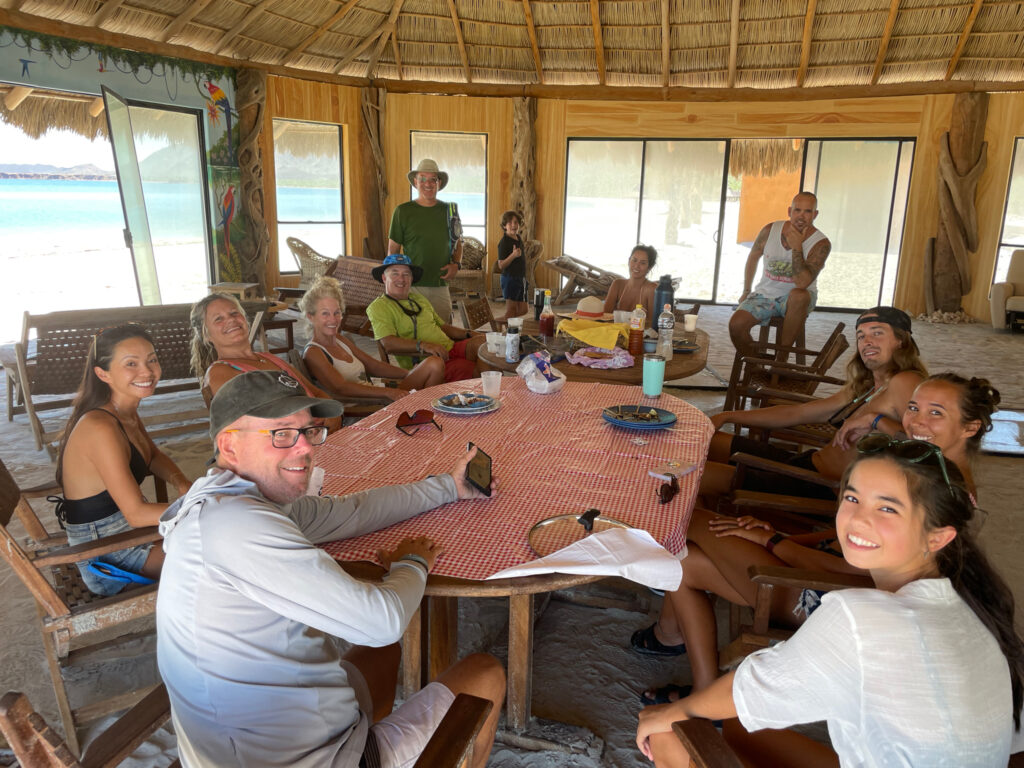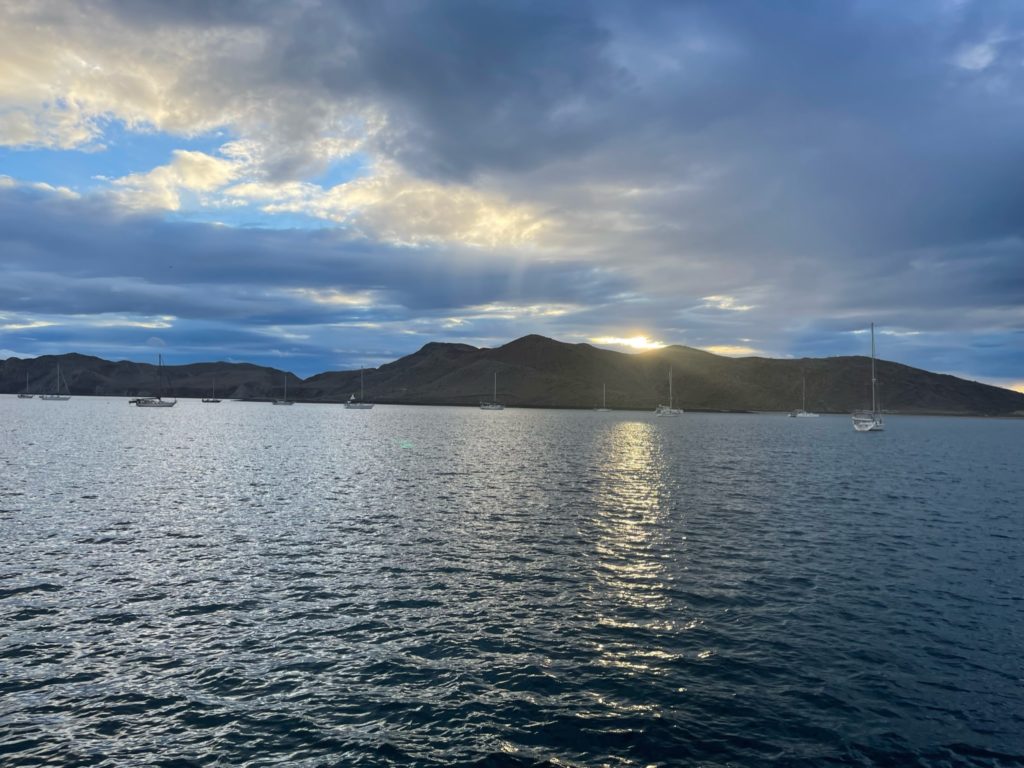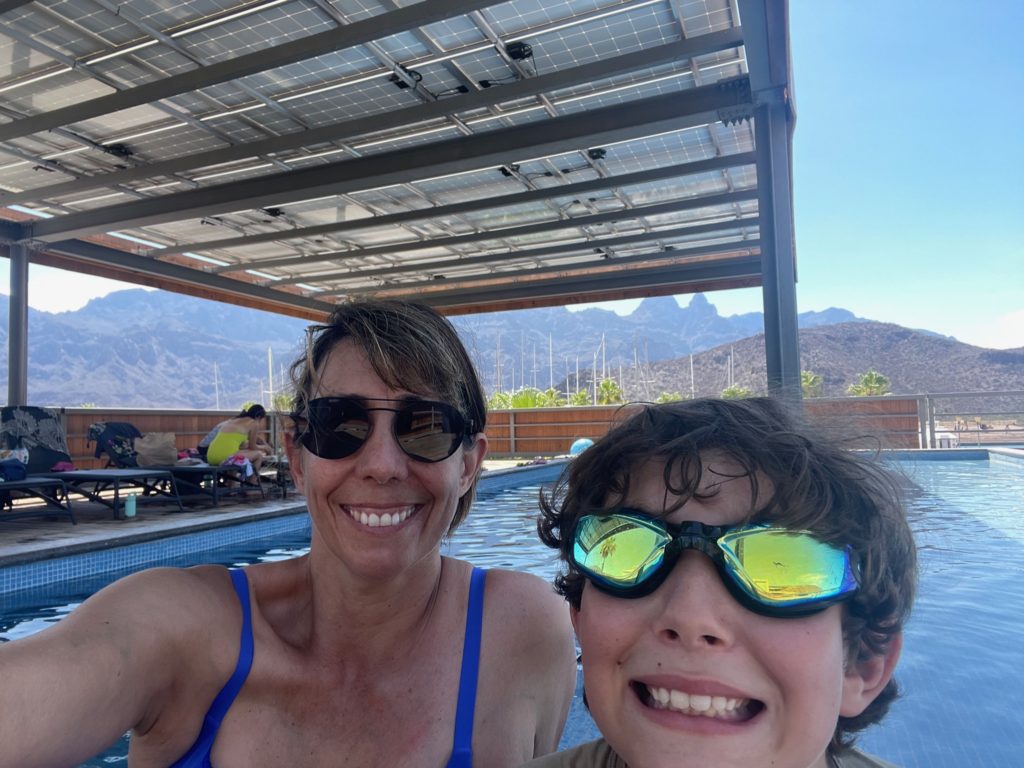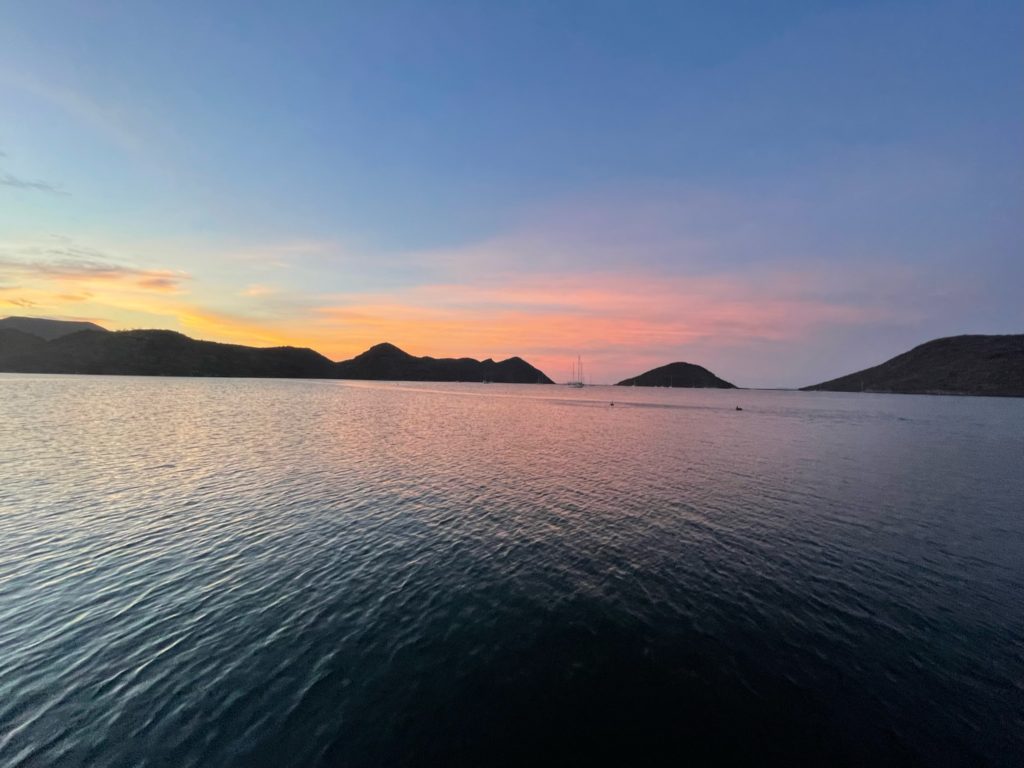When we woke up on Sunday, October 2, it was very windy. The wind was pleasantly cool and refreshing! Christi needed a jacket when she went out to watch the sunrise. Once the sun was up, the wind died and it warmed up fast.
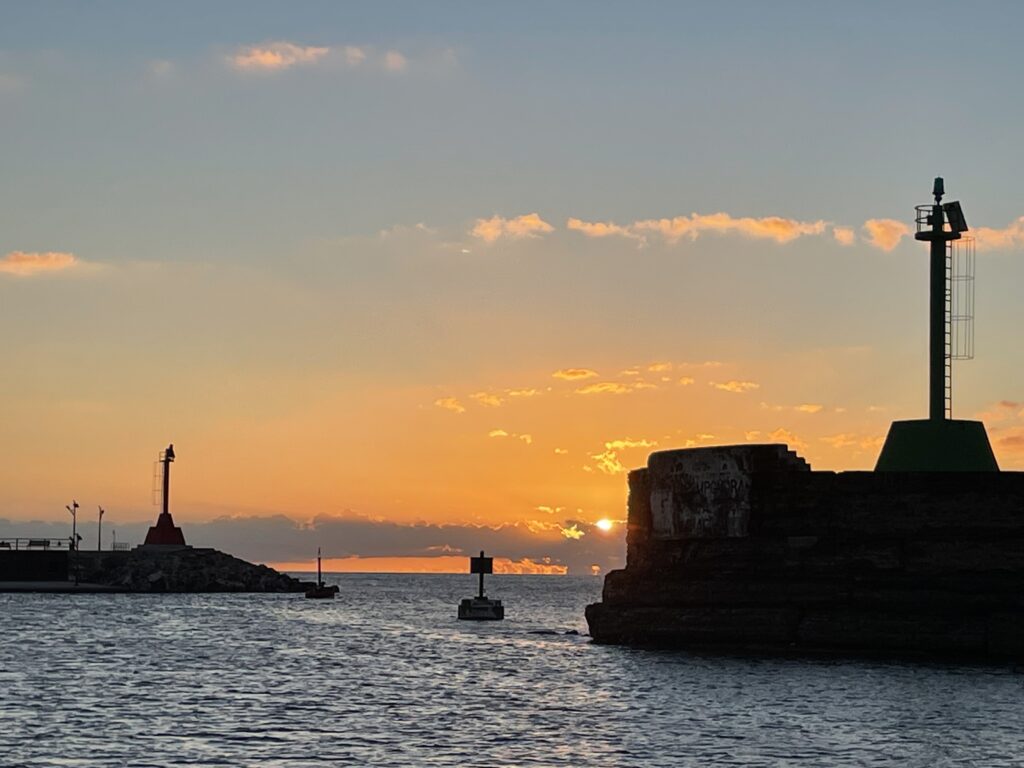
Does anyone know what kind of bird this is?

Eric started changing the engine oil and filter first thing in the morning, as planned. Unfortunately, he’d failed to notice that a valve was set wrong, and accidentally drained out the transmission oil simultaneously with the engine oil. And then, unbeknownst to him, while filling the engine with oil, he was also simultaneously filling the transmission with engine oil. It didn’t take Eric long to figure out that the engine wasn’t filling up with oil proportional to the amount that he was putting in. That’s when he noticed the valve.
Continue reading
